Join More Than 50,000+ Subscribers and get latest camera news and rumors
NEW CAMERA VIDEOS ON YOUTUBE
Download Our Android App
|
By admin, on November 13th, 2024
Fuji FIRST Cinema Camera A Closer Look, Fuji finally showcased the FUJIFILM GFX ETERNA, a camera for professional cinematography and short film makers production, the camera is being displayed at the Fujifilm booth (booth number 7204) and INTER BEE CINEMA (Hall 3) on the first day of Inter BEE 2024 (Japan). We will bring more updates to you very soon
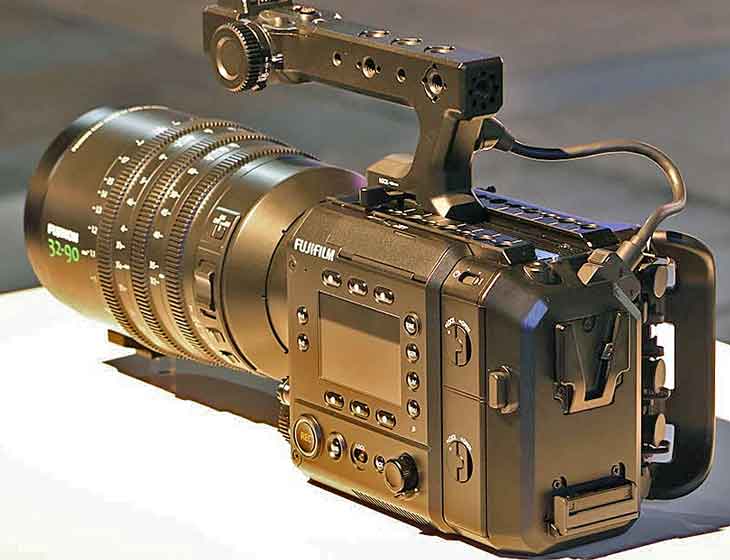
The Fuji Cinema camera uses the 102MP GFX CMOS II HS sensor, previously seen in the GFX 100S II and GFX 100. With this sensor, the new cinema camera is able to produce oversampled 4K, 6K, and 8K recordings that will capture stunning detail, ideal for high-end productions. The sensor also supports Multi-Aspect ratio recording, so for professionals it will become super easy to select their recording style in a single click with the best sensor available in the industry.
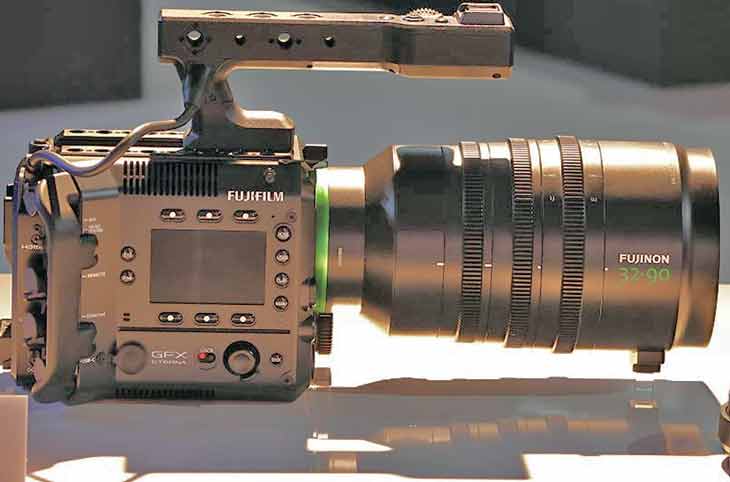
A G-to-PL mount adapter is also in development, opening compatibility with PL-mount lenses—the industry standard for cinema work.
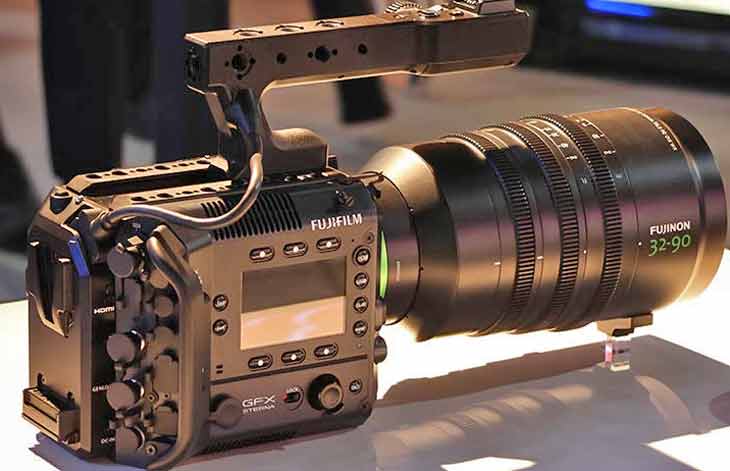
A new series of power zoom GF lens coming, and one of them is the 32-90mm focal length lens, dedicated to the GFX mount, which should offer filmmakers flexibility across wide to mid-telephoto ranges and offers fulltime AF support as well as optical image stabilization. A perfect camera for single-handed shooting.
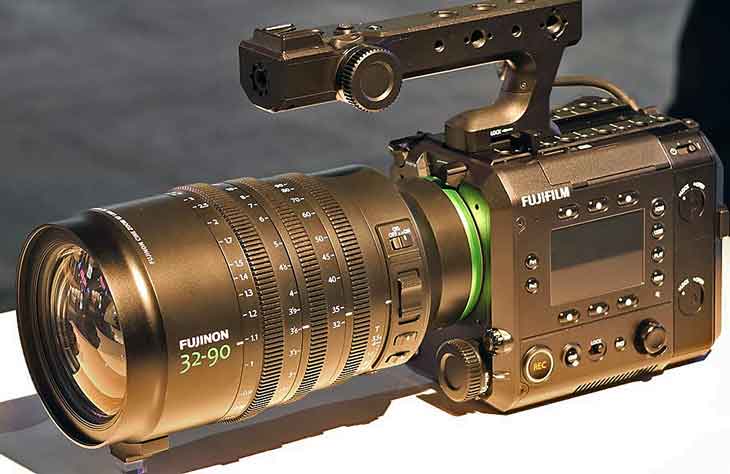
Release Date: Set to launch sometime in 2025, this camera represents Fujifilm’s dedication to evolving video production tools for professional filmmakers.
Follow us on our social pages FACEBOOK | TWITTER | INSTAGRAM, –> See More Fuji Rumors Or subscribe to us via Email
By admin, on October 15th, 2024
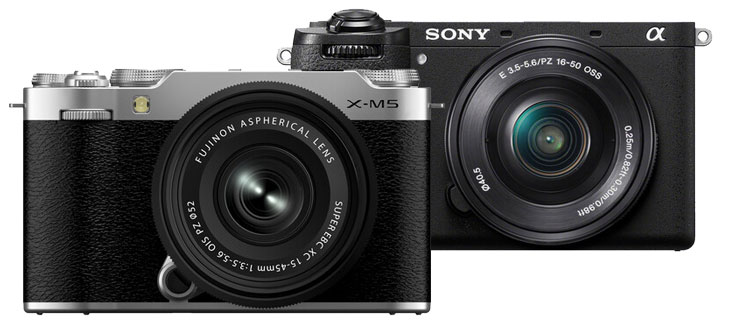
Let’s compare the Fuji X-M5 versus the Sony A6700 camera. We have compared the photographic & videography features in a separate table, so you can easily understand which camera is best for you.
If you are a photographer, which camera should you buy? Again, if you are a content creator, videographer, or wedding filmmaker, which camera should you choose?
Take a look at the specification comparison table below, where we have highlighted the major differences between the two cameras. They also have some similarities, but the good thing is that the Fuji X-M5 camera is able not only to compete but also to uplift the competition bar by upscaling the core specifications.
Fuji X-M5 vs Sony A6700 – 15 Major Differences for Photographers
| Feature |
Fuji X-M5 |
Sony A6700 |
| Sensor Resolution |
26.1 MP APS-C CMOS |
26 MP APS-C Exmor R BSI CMOS |
| Image Processor |
X-Processor 5 |
BIONZ XR |
| ISO Range (Photography) |
160 to 12,800 (Extended: 80 to 51,200) |
100 to 32,000 (Extended: 50 to 102,400) |
| Autofocus Points (Photo) |
425 Phase Detection Points |
759 Phase Detection Points |
| Autofocus Sensitivity |
-7 EV |
-3 EV |
| Continuous Shooting |
Up to 30 fps (Electronic, cropped) |
Up to 11 fps (Mechanical & Electronic) |
| Viewfinder |
No Viewfinder |
2.36M-dot OLED Viewfinder |
| Shutter Speed (Mechanical) |
1/4000 to 30 seconds |
1/8000 to 30 seconds |
| Mechanical Shutter |
Yes |
Yes |
| Image Stabilization |
NA |
5-Axis In-Body Image Stabilization (IBIS) |
| Sensor Type |
Standard CMOS |
Backside Illuminated (BSI) CMOS |
| Weather Sealing |
Yes (Dust & Water Resistant) |
Yes (Dust & Moisture Resistant) |
| Battery Life (Stills) |
Approx. 460 shots |
Approx. 570 shots |
| Weight |
355g (Body Only) |
493g (Body Only) |
| Memory Card Slot |
Single SD UHS-I Slot |
Single SD UHS-II Slot + CFexpress Type A |
Quick Analysis of Specification Differences between the two
The core specifications of the Fuji X-M5 camera look very impressive when compared with the Sony A6700 camera.
If you are a photographer, then of course you will miss the sensor-shift image stabilization in the Fuji X-M5, which is present in the Sony A6700.
Having image stabilization in your camera is really important if you shoot images in low-light environments. The image sensor compensates for hand movements even when you are using a slow shutter speed, resulting in neat and clean images.
Another feature that will help the Sony A6700 camera is the high ISO range, which is expandable from 50 up to 102400.
But wait, we still have some significant differences that might affect your choice. Another big difference for photographers to consider is the continuous shooting speed. If you don’t want any rolling shutter effect visible in your images, you have to use the mechanical shutter, as the electronic shutter can cause rolling shutter effects, especially with non-stacked sensors.
Autofocus Sensitivity and Tracking
Finally, let’s talk about the autofocusing systems of both cameras. We have seen the autofocus sensitivity difference between the two. If you compare them, the Fuji X-M5 camera looks very impressive with -7 EV autofocus sensitivity against the A6700 camera, which has -3 EV autofocus sensitivity. But this autofocus sensitivity only works once to acquire the autofocus point in extremely low-light situations.
Now, let’s consider a situation where quick moment-to-moment focus is needed. In this case, the Fuji X-M5 may focus more quickly compared to the A6700, due to its AF sensitivity. However, when we talk about autofocus tracking performance, due to the higher number of phase-detect autofocus points present in the Sony sensor—approximately 759 compared to Fuji’s 425—the tracking performance of the Sony A6700 sensor will be better than the X-M5.
So, we have two differences here. First, autofocus acquisition is better in the Fuji, but at the same time, the autofocus tracking performance is better in the Sony. Generally, most autofocus modes rely on the tracking performance of the camera, not on the acquisition part, so I would give a slight advantage to Sony in terms of tracking performance.
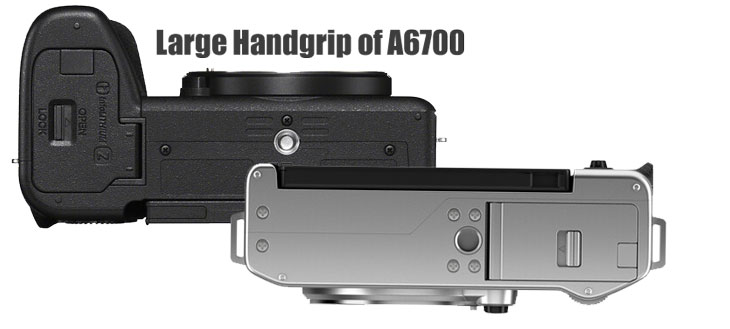
Design and Battery Life
Finally, let’s talk about the design part of both cameras. The Sony A6700 camera hand grip is deeper and much better compared to the Fuji X-M5. At the same time, we have a dedicated OLED viewfinder in the body of the Sony A6700 camera, which helps photographers who are used to using optical viewfinders from DSLRs. So, more or less, if we talk about ease of use and digital body design, the A6700 camera is more user-friendly.
At the same time, if we talk about battery backup, the Sony offers a bigger battery, resulting in more shots per charge—approximately 570+, whereas in Fuji, you are getting around 460. So yes, we do have some differences.
Conclusion: The best camera for photographer
should you go with the Fuji X-M5 or the Sony A6700? We get some extra features from inside to out with the Sony A6700 camera. Have a look:
The positive features of the Sony A6700 include the presence of a sensor-shift image stabilization system, which helps capture clear images in low-light environments. At the same time, the wide ISO range, starting from 50, is completely absent in the Fuji X-M5. Additionally, the A6700 offers a bigger battery life, which makes it a better option for professional photographers.
Not only that, but we also have a very large range of E-mount lenses from Sigma, Tamron, and many other brands. Although the Fuji X-mount is also open, it is not as big or broad as the E-mount at the moment, even though there are many options in X-mount.
Compared to the X-M5, we do see some advantages like autofocus sensitivity and continuous shooting speed. So, if you really want a camera with fast continuous shooting speed and don’t care much about the ISO range, image stabilization system, battery grip, or battery life, then the X-M5 might be a good option. However, for a photographer, we highly recommend the Sony A6700.
Fuji X-M5 vs Sony A6700 – 15 Major Video-Related Differences
| Feature |
Fuji X-M5 |
Sony A6700 |
| MAX Video Resolution |
6.2K up to 30 fps |
4K up to 120 fps |
| Slow-Motion Video |
1080p at 240 fps |
4K at 120 fps, FHD at 240 fps |
| Video Codec |
H.264/H.265 (HEVC) |
H.264/H.265 (HEVC), XAVC S-I |
| Video Bitrate |
400 Mb/s |
600 Mb/s |
| Video Recording Limit |
50 minutes in 4K |
No Recording Limit |
| Log Profiles |
F-Log, F-Log 2 |
S-Log 3, S-Cinetone |
| Autofocus Points (Video) |
425 Phase Detection Points |
759 Phase Detection Points |
| Autofocus Features |
Face/Eye Detection |
Real-time Tracking, Eye AF for Video, AI framing |
| External Recording |
4:2:2 10-bit via HDMI |
4:2:2 10-bit via HDMI |
| Viewfinder for Video |
No EVF |
Yes, 2.36M-dot OLED Viewfinder |
| Display Type |
3-Way Tilting LCD |
Fully Articulating LCD |
| Video Stabilization |
Electronic |
5-Axis IBIS + Active Mode for Video + Gyro |
| Audio Inputs |
3.5mm Mic Jack, 3.5mm Headphone Jack |
3.5mm Mic Jack, 3.5mm Headphone Jack |
| Mobile Streaming |
No |
Yes (IP Streaming 4K) |
video core specifications
Let’s compare the video core specifications between the Fuji X-M5 and the Sony A6700 cameras.
We have an open gate option in the Fuji X-M5, which videographers will love, especially for professional filmmaking, allowing them to decide the format and ratio for an entire scene. It’s better to record in open gate. In addition, we have options like Full HD mode at 240 frames per second for capturing slow-motion videos.
However, if you compare the X-M5’s features against the Sony A6700, you will miss the higher-resolution open gate mode. But aside from that, the Sony A6700 offers 4K @ 120 frames per second and can also record Full HD videos at 240 frames per second. The bitrate is approximately 600 Mbps, which is better than the X-M5’s 400 Mbps, even though Fuji offers a 6.2K open gate recording option.
A higher bitrate means more color information, and this will definitely help Sony users a bit more. In addition, we have a dedicated AI chip in the Sony A6700, which enhances autofocus tracking performance in video mode, including AI-based auto framing.
The good news is that Fuji is also improving their autofocus modes in the new X-M5 camera. Similar to Sony, they have introduced a product feature mode in the X-M5, showing Fuji is slowly trying to compete with Sony’s features in the A6700 camera.
Aside from all these features, the Sony A6700 has a 2.36-million-dot electronic viewfinder, which may not directly help with filmmaking, but is still a useful feature. However, the biggest factor is the presence of a sensor-shift image stabilization system.
With sensor-shift image stabilization, we can use active mode in video on the Sony camera to achieve smooth and stable footage. Sony also offers a gyro-based image stabilization system, which can smooth out footage like a GoPro when processed with special software.
Conclusion – Best Camera for Video
When you compare all these features, the Sony A6700 looks more appealing. However, if you are a Filmmakers (Independent or Short Films) prefer the open-gate recording format, you can go with the Fuji X-M5. But if you’re asking which one is more usable and practical camera, for
- For Wedding Cinematographers
- For Traditional Videographers (Corporate, Documentaries):
- For Content Creators
The Sony A6700 is more usable, with its 4K 120 FPS mode, advanced autofocus tracking with a dedicated AI chip, and hybrid image stabilization, which is the better option. The Sony A6700 simply offers a more advanced set of features.
Final Recommendations:
- Fuji X-M5 is recommended for filmmakers who need open gate recording and prefer high-resolution control.
- Sony A6700 is a all-in-one all-rounder for content creators, wedding cinematographers, and traditional videographers, features advanced autofocus, 4K 120 FPS, and Excellent stabilization features.
Fuji X-M5 Price
Fujifilm X-M5 Body: £799 / €899- B&H Store
Fujifilm X-M5 + XC 15-45 Kit: £899 / €999 – B&H Store
Sony A6700 Price
Sony A6700 Body: $1398 B&H Store | Amazon.com
Sony A6700 with Kit Lens: $1498 – B&H Store and Amazon.com
Support us – Use or affiliate link Amazon.com | B&H Store for the next purchase u make – it helps us
By admin, on October 12th, 2024

So finally, we have the Fuji X-M5 camera’s full details coming straight from Fujifilm X-M5 official press release. From the available set of details, we can clearly see the specs that are about to arrive inside the Fuji X-M5 camera. We will only miss the mechanical image stabilization, although the Fuji processor delivers very effective images. Take look at the Makor specification of the camera
Fuji X-M5 Price
Fujifilm X-M5 Body: £799 / €899- B&H Store
Fujifilm X-M5 + XC 15-45 Kit: £899 / €999 – B&H Store
Fujifilm XF 500mmF5.6 Lens: £2,899 / €3,399
Fujifilm XF 16-55mmF2.8 II: £1,149 / €1,349
Fuji X-M5 Specification
- Weight: Approximately 355g (including battery and memory card).
- Dimensions: 111.9mm width, 66.6mm height, 38.0mm depth.
- Sensor: 26.1 MP back-illuminated X-Trans CMOS 4 sensor.
- Processor: X-Processor 5 for high-speed image processing.
- Film Simulation: 20 Film Simulation modes.
- Autofocus (AF): AI-based subject detection AF (animals, cars, etc.).
- Face/Eye Detection: Supports face and eye AF.
- AF Algorithm: Predictive AF algorithm for moving subjects.
- Video Recording: 6.2K/30P 4:2:2 10-bit internal recording.
- 4K Video: Supports 4K/60P recording.
- High-Speed Video: 1080/240P recording.
- Stabilization: Powerful digital image stabilization for both minor and large shakes.
- Built-in Microphones: Three microphones with selectable directivity (surround, front, back, front & back).
- Noise Reduction: Steady-state noise reduction for continuous frequency noise.
- Vlog Mode: Touch-based intuitive control for shooting.
- 9:16 Short Movie Mode: Easy vertical video capture for social media.
- Bit Rates: Supports 8 Mbps and 25 Mbps bit rates for video.
- Card Slot: SD card storage for internal recording.
- Design: Symmetrical dials with a compact X-series aesthetic.
- Auto Mode: Auto scene recognition for first-time users.
- Low Power Consumption: Optimized for long shooting times.
- Bird & Insect Detection: Special AF setting to detect birds and insects.
- Drone Detection: Detects drones under the “Airplane” setting.
- Display: Touch-sensitive LCD with improved icon placement.
- High AF Precision: Improved precision even in low-contrast environments.
Fuji X-M5 Full Press Release and Images
These specs highlight the Fuji X-M5’s compact design, high-quality video recording
FUJIFILM X-M5 Mirrorless Digital Camera
The lightest model in the current X series
Equipped with advanced features for both stills and video. Enjoy shooting every day with ease
October 14, 2024

TOKYO, October 14, 2024 – FUJIFILM Corporation (President & CEO, Representative Director: Teiichi Goto) announces the launch of the latest model of the mirrorless digital camera the “FUJIFILM X-M5” (X-M5). It is a new addition to the X Series of mirrorless digital cameras known for their compact and lightweight body and superior image quality based on the company ’s proprietary color reproduction technology.
The X-M5 is a mirrorless digital camera with a compact and lightweight body weighing approximately 355g*1 making it the lightest*2 camera in the X series. The X-M5 is equipped with a full range of functions, including subject detection AF that can detect moving objects such as animals and cars using AI and a 6.2K/30P movie recording function, making it possible to shoot both still images and movies with a single camera. Additionally, the design features the high-quality appearance characteristic of the X series. The X-M5 is the perfect camera for a wide range of users, from first-time digital camera users to photography enthusiasts, enhancing the joy of photography.
The X-M5 is a mirrorless digital camera equipped with the back-side illuminated 26.1-megapixel “X-Trans™ CMOS 4”*3 sensor and the “X-Processor 5” high-speed image processing engine, enabling high-quality image capture. A Film Simulation dial is located on the top surface of the warship to switch between “Film Simulation” modes, which allows users to enjoy various color tone expressions as if they were changing photographic film. The X-M5 is equipped with high-performance video recording functions such as 6.2K/30P 4:2:2 10-bit video onto an SD card inserted in the camera. In addition, its powerful digital image stabilizer and high-performance built-in microphone support comfortable video recording. As for the Vlog Mode, the newly introduced “9:16 Short Movie Mode” makes it easy to shoot vertical videos.
*1 Including battery and memory card.
*2 For current X series models.
*3 X-Trans is a trademark or registered trademark of FUJIFILM Corporation.
1. Product features
(1) Compact and lightweight body and product design that makes you want to enjoy shooting
▪ It weighs approximately 355g and measures approximately 111.9mm in width, 66.6mm in height, and 38.0mm in depth. The extremely lightweight and compact body for a mirrorless digital camera makes it easy to carry around and enjoy photography every day.
▪ Despite its compact size, the camera has the high-quality appearance of the “X series”. Symmetrically placed dials on the top surface of the warship section highlight the beauty of the camera.

▪The Film Simulation dial is conveniently placed on the lek shoulder of the top face. Users can easily switch between a total of 20 Film Simulation modes according to the subjects and scenes, making it easier to enjoy a variety of color tones in both still and moving images.
▪ The top right features a mode dial. In AUTO mode, the camera automatically recognizes the optimal shooting mode for the scene, allowing even first-time digital camera users to easily capture high-quality stills and videos.
(2) Equipped with a high-performance sensor and high-speed image processing engine to achieve high image quality and high-performance AF
▪ The X-M5 is equipped with the back-illuminated “X-Trans™ CMOS 4” sensor with approximately 26.1 megapixels and the latest high-speed image processing engine “X-Processor 5”. This allows for high image quality photography with low power consumption.
▪ The camera features the subject detection AF, developed with deep learning technology, in addition to the existing Face / Eye AF. AI is used to add the ability to detect animals, birds, cars, motorcycles, bicycles,
airplanes, trains, insects and drones*4
▪ The latest AF predictive algorithm provides high tracking performance for moving subjects and high precision AF in low-contrast environments.
*4 Set the Subject Detection Selng to “BIRD” when you want to detect insects and to “AIRPLANE” when you want to detect drones.
(3) 6.2K/30P video recording and other extensive video func^ons
▪ The X-M5 can record 6.2K/30P 4:2:2 10-bit video onto an SD card inserted in the camera, and also supports extensive video functions including 4K/60P and 1080/240P capability.
▪ The camera is equipped with powerful digital image stabilization. It is effective not only for minor camera shake but also for large shaking that occurs when shooting video while walking.
▪ For the first time in our digital camera lineup, three built-in microphones are equipped. You can choose from four microphone directivity options: surround, front, back, or front & back, depending on the situation. The camera is also the first to feature a steady-state noise reduction function, which reduces noise that continues to ring at a certain frequency, such as air conditioning noise.
▪ Vlog mode allows users to change shoo^ng conditions intuitively by touching the LCD. Improvements in the number and placement of icons make video recording even more intuitive. In addition, the new “9:16 short movie mode” allows users to easily shoot vertical videos popular on various social media and smoothly share the captured content.
▪ New bit rates of 8 Mbps and 25 Mbps have been added to the bit rates that can be selected in the “Media Recording Settings” when shooting video. This shortens the transfer time to external devices such as
smartphones, and contributes to shortening the ^me required to upload captured video directly to social media.
2. optional accessories
Cooling Fan “FAN-001″*5 (already on sale)
▪ This cooling fan can be attached to the rear panel of the camera body without a cable, supporting long hour shooting and video recording in a high-temperature condition. The power can be supplied to the fan from the camera body
Tripod Grip “TG-BT1″*6 (already on sale)
▪ This grip enhances mobility and camera’s hold while adding tripod functionality. Users can comfortably take self-portraits and low angle shots, where it is normally difficult to hold the camera in position. As a tripod, the TG-BT1 can be used for a wide range of love fujiru mors applications from group shots to tabletop still.
*5 Compatible models are FUJIFILM X-M5, FUJIFILM X-H2S, FUJIFILM X-H2, and FUJIFILM X-S20.
*6 Compatible models are FUJIFILM X-H2S (Ver.3.00 or later), FUJIFILM X-H2 (Ver.1.2 or later), FUJIFILM X-T5 (Ver.1.00 or later), FUJIFILM X-T4 (Ver.1.70 or later), FUJIFILM X-T3 (Ver.4.50 or later), FUJIFILM X-S20, FUJIFILM X-S10 (Ver. 2.60 or later), FUJIFILM X-T30 II (Ver. 1.20 or later), FUJIFILM X-T30 (Ver. 1.50 or later).
source of the press release and images credit FR.com
By admin, on October 4th, 2024
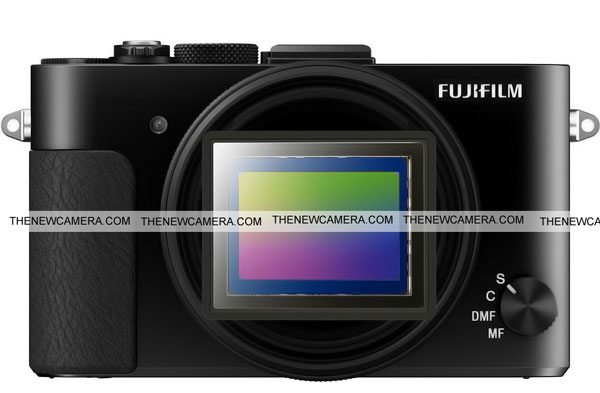 Fuji’s next full-frame compact can become a spiritual successor of the Sony RX1R camera According to the latest rumors, Fuji will introduce a new sensor size. The Fuji rumor mill very clearly writes it, they are talking about a new sensor size. After that post, many speculations started, but the most trusted rumor mill right now, Sony Alpha Rumor, believes that Fuji will announce a full-frame camera. The big reason behind this is the popularity of the Fuji X-100 VI camera. Now, they want to move further and expand the consumer base of compact mirrorless lovers by introducing a full-frame compact mirrorless camera.

Since this very moment, we don’t know what exactly is coming in the next, It may not be an interchangeable-lens mirrorless camera, as none of Fuji’s lenses are compatible with full-frame cameras. But again, there is a huge scope for a compact FF camera.
Also, see – 80MP in the Fuji X-H3? Fuji Fans Think It’s Within Reach
The other piece of information we received a few days ago, and published on our website, is that if Fuji adopts EXR technology instead of X-TRANS in their existing sensors, there is a huge potential to approximately double the resolution and enable single-click HDR capture with their existing sensors, just by taking out the color filter array as they did with the EXR sensor-based cameras in the past. That’s the news we received from a Chinese source, indicating they may alter the sensor’s color filter array shortly to upscale the existing APS-C technology. So, that’s another set of information to consider when talking about the arrival of a brand-new sensor, unless they rework the existing color filter technology in their cameras.
Follow us on our social pages FACEBOOK | TWITTER | INSTAGRAM, –> See More Fuji Rumors Or subscribe to us via Email
SRC – FR.com Via – SARYT
By admin, on September 28th, 2024
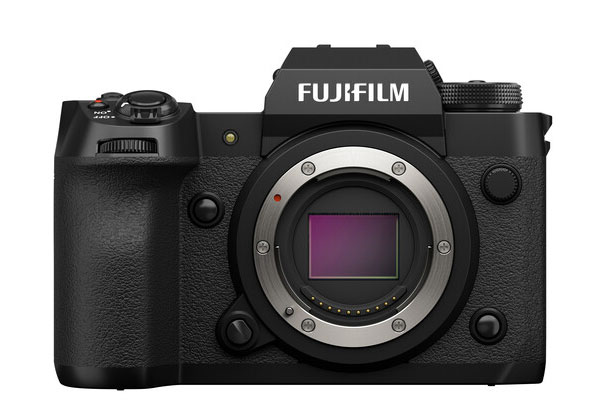
Some Fuji camera lovers thinks by tweaking the design of the X-Trans sensor and interpolation algo tech, it is easy to achieve lossless 80MP resolution of a 40MP X-Trans sensor, hers what they say, after reading it I thought, yes its possible since they already have the tech
X-TRANS EXR CMOS, boasting high resolution, high sensitivity, and high dynamic range.
It seems to be a 40MP 45-degree rotated X-Trans CFA. High resolution: 40MP interpolated output to 80MP, 2x efficiency high resolution; High sensitivity: 80MP pixels have the pixel size of 40MP pixels, 2x efficiency high sensitivity; High dynamic range: Dual native ISO readout 16bit RAF RAW, PDR surpasses GFX.
The abstraction of the Super CCD era, lingering as a nightmare for former Fuji users. – E88_8888
Let me break down both concepts for you, starting with the 40MP 45-degree rotated X-Trans CFA and then moving on to the explanation of 40MP interpolated output to 80MP and other advanced features.
1. 40MP 45-degree rotated X-Trans CFA
- 40MP: Refers to a sensor that captures 40 million pixels of data, like they are already using it from the Fuji X-H2 to the Fuji X-T5. As we know each pixel represents a point of information in the image, contributing to its overall sharpness and detail.
- X-Trans CFA: This stands for X-Trans Color Filter Array. The CFA is a matrix of color filters placed over the sensor to help capture different colors (red, green, and blue). Fujifilm’s X-Trans CFA is unique because it uses a more randomized, non-repeating color pattern compared to the traditional Bayer CFA used by most other manufacturers.
- But Now We have to MOVE to More Superior Tech That, they have used in the PAST – The EXR CFA, not the X-Trans CFA – They have to adopt the 45-degree rotated CFA pattern now in X-Trans sensor: The 45-degree rotation of the X-Trans CFA means that the filter pattern is tilted diagonally compared to the typical horizontal/vertical arrangement in a Bayer CFA. This further reduces problems like moiré and improves the capture of fine details and textures in images.
2. 40MP interpolated output to 80MP, 2x efficiency high resolution
This phrase refers to a technology where the 40MP sensor outputs images that have an effective resolution of 80MP by using interpolation and advanced processing. Here’s what it means:
- 40MP interpolated output to 80MP: The sensor itself physically has 40 million pixels, but using smart algorithms and the updated EXR Sensor CFA structure that we have discussed, the camera generates a higher-resolution image with details equivalent to an 80MP image. Interpolation involves estimating additional pixel data to “fill in the gaps” between actual pixels, thereby increasing the perceived resolution of the image.
- 2x efficiency high sensitivity: This indicates that the camera maintains a high level of sensitivity (good low-light performance) while achieving this higher resolution, essentially offering double the efficiency in terms of light gathering compared to a regular 80MP sensor.
Summary:
- 40MP 45-degree rotated X-Trans CFA refers to a 40MP sensor that uses Fujifilm’s unique X-Trans color filter array, rotated at a 45-degree angle to improve color accuracy and detail capture while reducing moiré.
- 40MP interpolated output to 80MP means the sensor uses interpolation to create images that appear as detailed as 80MP, without actually having 80 million physical pixels.
- The sensor retains the light sensitivity of a 40MP sensor, providing good low-light performance despite the high resolution.
- With dual native ISO and 16-bit RAW support, the sensor can capture a wide dynamic range with exceptional detail and color depth, surpassing even some medium-format cameras like the Fujifilm GFX series.
This technology aims to provide users with the best of both worlds: super high resolution, excellent low-light performance, and wide dynamic range without the usual drawbacks associated with high megapixel sensors.
More on this …
5-degree rotated X-Trans CFA isn’t a new tech, they have used it previously in their CCD (SuperCCD) and CMOS (BSI CMOS)
Fujifilm “EXR” color filter array
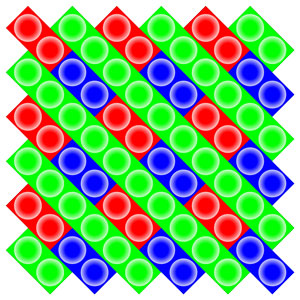
Fujifilm’s EXR color filter array are manufactured in both CCD (SuperCCD) and CMOS (BSI CMOS). As with the SuperCCD, the filter itself is rotated 45 degrees. Unlike conventional Bayer filter designs, there are always two adjacent photosites detecting the same color. The main reason for this type of array is to contribute to pixel “binning”, where two adjacent photosites can be merged, making the sensor itself more “sensitive” to light. Another reason is for the sensor to record two different exposures, which is then merged to produce an image with greater dynamic range. The underlying circuitry has two read-out channels that take their information from alternate rows of the sensor. The result is that it can act like two interleaved sensors, with different exposure times for each half of the photosites. Half of the photosites can be intentionally underexposed so that they fully capture the brighter areas of the scene. This retained highlight information can then be blended in with the output from the other half of the sensor that is recording a ‘full’ exposure, again making use of the close spacing of similarly colored photosites.
Fujifilm “X-Trans” filter
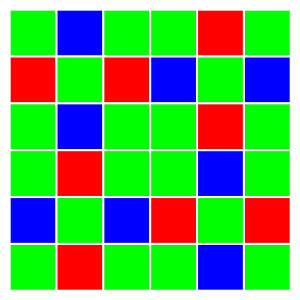
The Fujifilm X-Trans CMOS sensor used in many Fujifilm X-series cameras is claimed to provide better resistance to color moiré than the Bayer filter, and as such they can be made without an anti-aliasing filter. This in turn allows cameras using the sensor to achieve a higher resolution with the same megapixel count. Also, the new design is claimed to reduce the incidence of false colors, by having red, blue and green pixels in each line. The arrangement of these pixels is also said to provide grain more like film.
Here’s a comparison table outlining the key differences between the Fujifilm EXR color filter array and the Fujifilm X-Trans color filter array:
| Feature |
Fujifilm EXR Color Filter Array |
Fujifilm X-Trans Color Filter Array |
| Type of Sensors |
Used in both CCD (SuperCCD) and BSI CMOS sensors |
Primarily used in CMOS sensors in X-series cameras |
| Filter Orientation |
45-degree rotated |
Randomized, no fixed pattern, not necessarily rotated |
| Photosite Arrangement |
Two adjacent photosites detect the same color |
Red, green, and blue pixels are interleaved in a unique pattern |
| Pixel Binning |
Supports pixel binning to increase light sensitivity |
Does not support pixel binning; utilizes a unique arrangement to reduce moiré |
| Dynamic Range |
Can record two different exposures for increased dynamic range |
Higher dynamic range due to improved arrangement and color accuracy |
| Anti-Aliasing Filter |
Often requires an anti-aliasing filter due to potential for moiré |
Designed to reduce moiré, can be used without an anti-aliasing filter |
| Color Fidelity |
Less effective in reducing false colors |
Better resistance to false colors, producing more natural tones |
| Grain Appearance |
May produce a digital grain pattern |
Mimics the grain structure of film, providing a more organic look |
| Software Support |
Generally well-supported in various raw processing software |
May lack full support in third-party software (e.g., Lightroom) due to custom pattern |
Summary of Key Differences:
- EXR CFA: By employing the two-exposure system and pixel binning, the EXR CFA can effectively increase the resolution of captured images. This results in images that can appear more detailed, particularly in challenging lighting conditions where highlights and shadows need to be captured accurately.
- X-Trans CFA: While the X-Trans can produce high-resolution images, its performance is often limited by the lack of pixel binning and dual exposure features. Instead, it optimizes color accuracy and reduces moiré without enhancing resolution as effectively.
Conclusion / Admin Note –
If they Adopt the EXR color filter array to 5th Generation of the X-Trans sensor, for sure they can upscale resolution and add abilities like Single click HDR capture in existing flagship cameras.
By admin, on September 28th, 2024
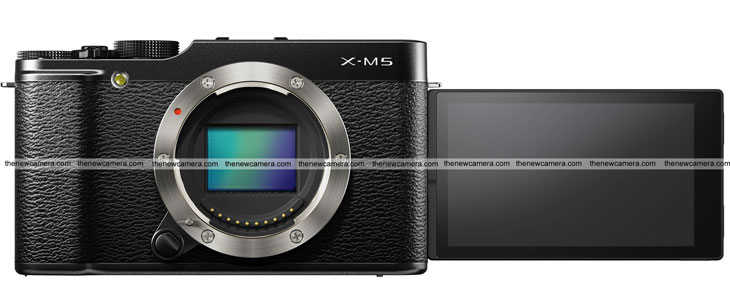
According to the latest rumors coming steight out from Fujirumor mill, the upcoming Fuji X-M5 Camera doesn’t feature sensor-shift image stabilization, it’s Shocking! Fuji X-M5 Misses This Must-Have Feature.
For some, the absence of IBIS might be a BIG Disappointment, particularly for those who rely on handheld shooting or video content creation and love to see IBIS inside their camera to get stable video footage, for some users it’s completely fine specifically those who create talking-head videos while sitting in their room or office chair …, especially those who typically use tripods or external stabilization, it may not be as big of a concern.
As we all know, Sony’s entry-level bodies like the ZV-E10 offer gyro-based IS, which provides gimbal-like smoothness in post-production. If Fuji fails to include proper IBIS or electronic image stabilization, it will definitely affect many users.
Follow us on our social pages FACEBOOK | TWITTER | INSTAGRAM, –> See More Fuji Rumors Or subscribe to us via Email
source – Fujirumors
By admin, on September 27th, 2024

We have already published a lot of details related to the upcoming Fuji X-M5 camera. You can also see the full set of core specifications of the upcoming camera below, which were first published on our website. Now, as per the latest information surfaced on the web, it has become very clear that the upcoming camera is being manufactured in China.
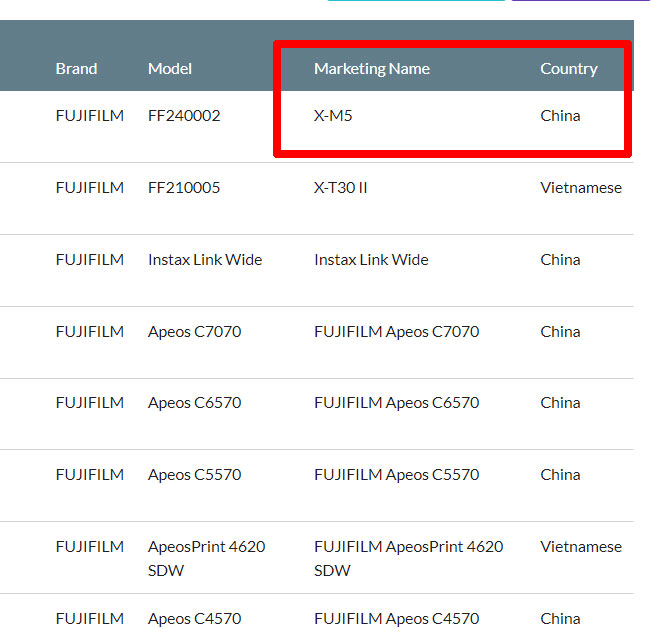
Issue date: September 20, 2024
Applicant: FUJIFILM Indonesia
Device: Digital camera
Model: FF240002
Marketing name: X-M5
Country of Origin: China
A Japanese website, asobinet.com, found this particular incident. Could you take a look at what they said
It appears to be “FF240002,” which was previously registered with a Chinese certification agency. In Indonesia, the model name appears to be “X-M5.” The X-M5 has been rumored for some time, so this isn’t a surprise, but the fact that it’s registered with a model name means that an official announcement is near.
The country of manufacture is likely to be China, which manufactures many Fujifilm cameras. The X-T200, which is said to be made by Xacti, is manufactured in Indonesia, but if it is manufactured in China, Fujifilm likely makes it. (Incidentally, the X-T5 and X-H2 are also made in China.
Fuji X-M5 Specification
- 26.1MP APS-C X-Trans BSI CMOS 4 Sensor
- X-Processor 5 Image Processor
- DCI/UHD 4K at 60 fps [4k 120 fps with crop]
- Dedicated Vlog Mode for Content Creators
- 425-Point Hybrid AF System
- 7-Stop In-Body Image Stabilization
- Frame.io Camera to Cloud Integration
- 20 Film Simulation Modes
- 3.0″ 1.62m-Dot Vari-Angle Touchscreen
- Bluetooth and Wi-Fi Connectivity
- Arrival: On or before Nov 2024 [may get delayed]
Stay tuned more updates are coming
Follow us on our social pages FACEBOOK | TWITTER | INSTAGRAM, –> See More Fuji Rumors Or subscribe to us via Email
|
KEEP THIS BLOG ALIVE - Support New Camera Buy Canon Lenses, Buy Music CD or Digital Camera at amazon it helps this site, and you do not pay anything extra, it is just a way to help support this site.

|





















